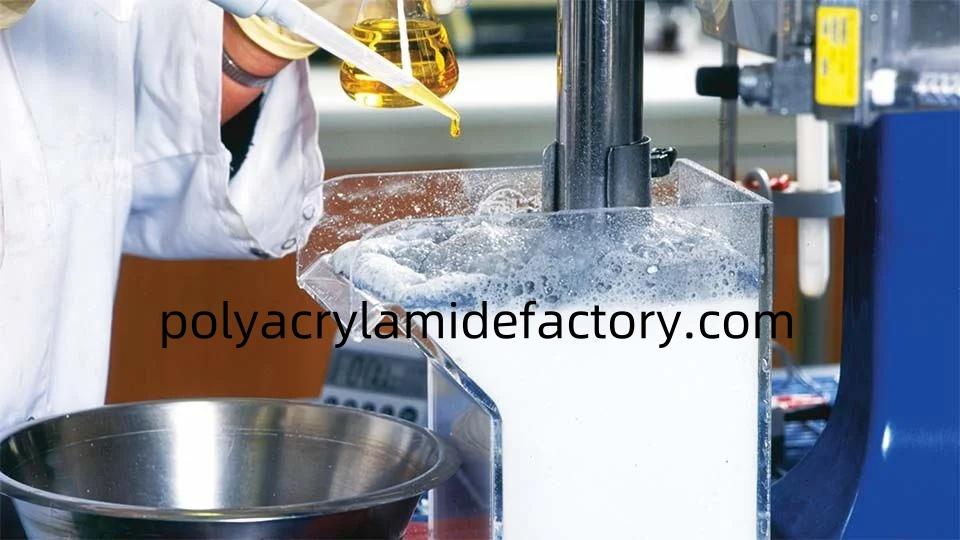Introduction
Effluent treatment in the paper industry presents numerous challenges due to the high volume of wastewater, suspended solids, organic matter, and dissolved materials generated during production. Managing these pollutants efficiently is vital for environmental compliance and cost control. Among the various treatment agents available, anionic polyacrylamide emulsion has emerged as an ideal choice for enhancing the performance of wastewater treatment systems in paper mills.
Understanding Paper Mill Wastewater Challenges
Paper industry effluents typically contain a mixture of fine fibers, fillers, chemical residues, and biological contaminants. These can severely impact downstream water bodies if not treated properly. Traditional sedimentation and biological treatment methods often struggle to meet discharge standards alone, leading to the increased need for high-performance chemical aids.
Key issues in untreated paper mill wastewater include:
-
High suspended solids (TSS)
-
Elevated chemical oxygen demand (COD)
-
Difficulty in sludge dewatering
-
Slow settling and poor water clarity
This is where anionic polyacrylamide emulsion plays a critical role.
How Anionic Polyacrylamide Emulsion Works
Anionic polyacrylamide emulsion functions primarily as a flocculant, facilitating the aggregation of negatively charged particles suspended in wastewater. It acts by neutralizing charges and creating large, fast-settling flocs that are easier to separate during sedimentation or filtration.
Here’s a general breakdown of how it improves the treatment process:
Effluent Treatment Stage | Role of Anionic Polyacrylamide Emulsion
Pre-clarification | Accelerates particle agglomeration
Primary sedimentation | Enhances solid-liquid separation
Sludge dewatering | Improves moisture removal efficiency
Final polishing | Aids in achieving clearer effluent and low turbidity
Advantages in the Paper Industry Context
Anionic polyacrylamide emulsion is especially suitable for the paper industry due to the nature of its effluent composition and volume. Its key advantages include:
-
High compatibility with fiber-based pollutants
-
Fast reaction time with minimal dosage required
-
Stable performance under various pH and temperature conditions
-
Effective sludge volume reduction and easier handling
-
Improved water recycling potential due to higher clarity
Why Emulsion Form Is Superior
Unlike dry powders, emulsion-form anionic polyacrylamide dissolves rapidly in water and can be dosed with precision through automated systems. This ensures consistent treatment performance and reduced operator labor.
Environmental and Operational Benefits
By using this flocculant, paper mills can:
-
Reduce chemical oxygen demand (COD) in discharged water
-
Lower sludge production, reducing disposal costs
-
Improve compliance with environmental regulations
-
Enable water reuse within the plant, contributing to sustainability goals
Select the Right Partner for Effluent Treatment Solutions
To fully realize the benefits of anionic polyacrylamide emulsion, paper mills need a reliable supplier that offers stable product quality, technical support, and customized formulations.
Polyacrylamidefactory – Your Trusted Source for Industrial-Grade Anionic Polyacrylamide Emulsion
At Polyacrylamidefactory, we specialize in the research and production of high-efficiency anionic polyacrylamide emulsions tailored for industries like papermaking. Our products are designed to deliver excellent flocculation performance, faster sedimentation, and reduced sludge volume—all while supporting sustainability and regulatory compliance.
Whether you're looking to enhance your primary clarifier efficiency, improve sludge handling, or simply make your plant more eco-friendly, our experienced team is ready to help you achieve your goals.
Discover how our solution supports cleaner water and a greener future:
https://www.polyacrylamidefactory.com/news/industry-news/how-does-hengfeng-anionic-polyacrylamide-emulsion-work.html

